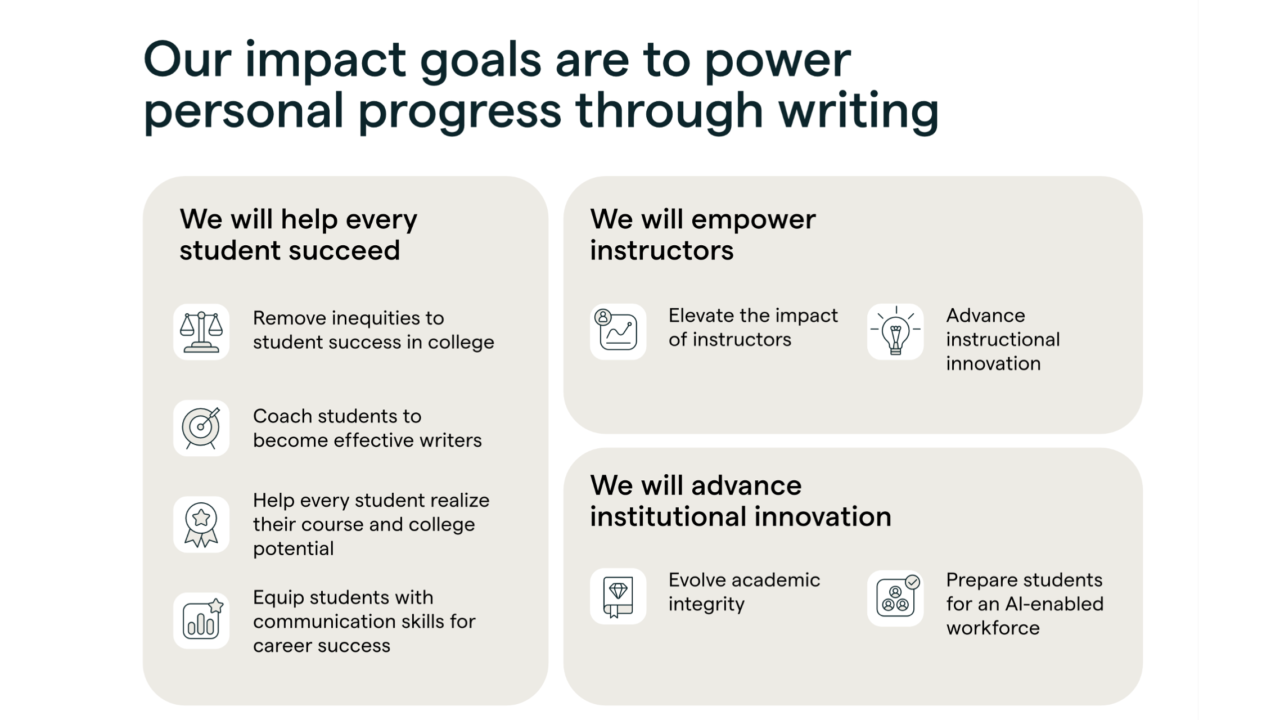If you want to be an edtech market leader, measure and report your impact

Successful edtech companies build trust with their customers
In more than 30 years of building and advising education companies, I’ve been surprised how few have transformed their education mission into explicit impact goals against which they measure their annual progress. And yet, as the management guru Peter Drucker said, “You can’t improve what you don’t measure.” Does this reflect a lack of conviction in their mission? A disconnect between their impact mission and their business strategy? Or concerns that their impact results may be underwhelming? I’ve worked with companies wrestling with all of these. However, in a market flooded with product options and inflated claims, edtech companies need to find ways to build trust with their target customers if they hope to grow their business. My recommendation is, if you want to be an edtech market leader, measure and report your impact as a cornerstone of building that trust.
Why Grammarly has the potential for big impact
Grammarly is one of the most loved and widely used student apps in education today—used by a staggering 12 million students every day. It also focuses on coaching students to develop a skill that research has shown is fundamental to college and career success—writing (and communication, more generally). The combination of tackling a critical enabling skill and at-scale, intense usage points to Grammarly having the potential for big impact. I was therefore thrilled when Jenny Maxwell—the head of Grammarly for Education—approached me to assess Grammarly’s strategy and to help her team to craft its impact mission and first impact report (as I’ve done for some other ambitious edtechs, such as Perlego).
Grammarly’s mission and strategy
Grammarly was founded by three Ukrainians with a common lived experience—that improving your writing skills unlocks success. With a mission to “power personal progress through writing,” they created an always-on writing coach that has been at the bleeding edge of applying AI in education for more than 16 years. During that time, Grammarly has grown to become not just one of students’ favorite consumer education applications (by which I mean, one they choose to buy themselves), but one that educational institutions purchase to shore up students’ writing skills at scale and help more to succeed through college. And today, in a period of dramatic challenges and changes in higher education, Grammarly is providing administrators with capabilities to manage and scale the use of an AI learning tool across campuses (see my projections on Which AI edtech will win in higher-education, when, and why).
Building Grammarly’s impact report
Helping Jenny and her team to build their 2024 impact report gave me the enviable opportunity to dig deep into Grammarly’s mission, business strategy, product capabilities, and long, wide and rich portfolio of customer evidence. As a consumer-first business, Grammarly has always been data-driven. It is obsessed with understanding what customers are trying to achieve and measuring if and how their product is helping. Grammarly’s analytics team explore this atomically—with every interaction, every day—and longitudinally—over months and years. All this has created a treasure trove of types of impact evidence to assess and categorize.
Repeatability is good science
Grammarly is intentionally designed to be flexible and ubiquitous—to support a diversity of students, across a multitude of their writing tasks, and in a rich variety of contexts (applications, etc.). As such, Grammarly has focused much of its research to date on assessing student usage at-scale (across tens of millions of users) and institution-wide rollout strategies. This has given Grammarly systematic evidence of impact for individual students and of successful institutional deployments. The next phase of research will be more forensic measurement of instructor implementations (how they ask students to use Grammarly for particular writing tasks in specific courses) and how these affect student behaviors and outcomes. These course-level impact studies are already underway, and results will be shared in future impact reports.
If you want to be trusted, measure and report your impact
Grammarly has been brave in undertaking an external assessment of its impact and in publicly publishing its results. If you’re in higher education, I hope you find their 2024 impact report stimulating—in particular, that their impact goals resonate, their strategy for helping students succeed is inspiring, and the diverse evidence they have built is persuasive.
Need help to refine your mission and report your impact?
So my advice is, if you want to grow to be an edtech leader, measure and report your impact. If you want an independent, incisive, and experienced assessment of your Mission and Business Strategy and practical advice for how to refine and align them to drive customer value and business growth, we’d love to help. We also welcome your feedback or questions on this blog—just use the form below and start “Your challenge” with the word “Feedback.”
